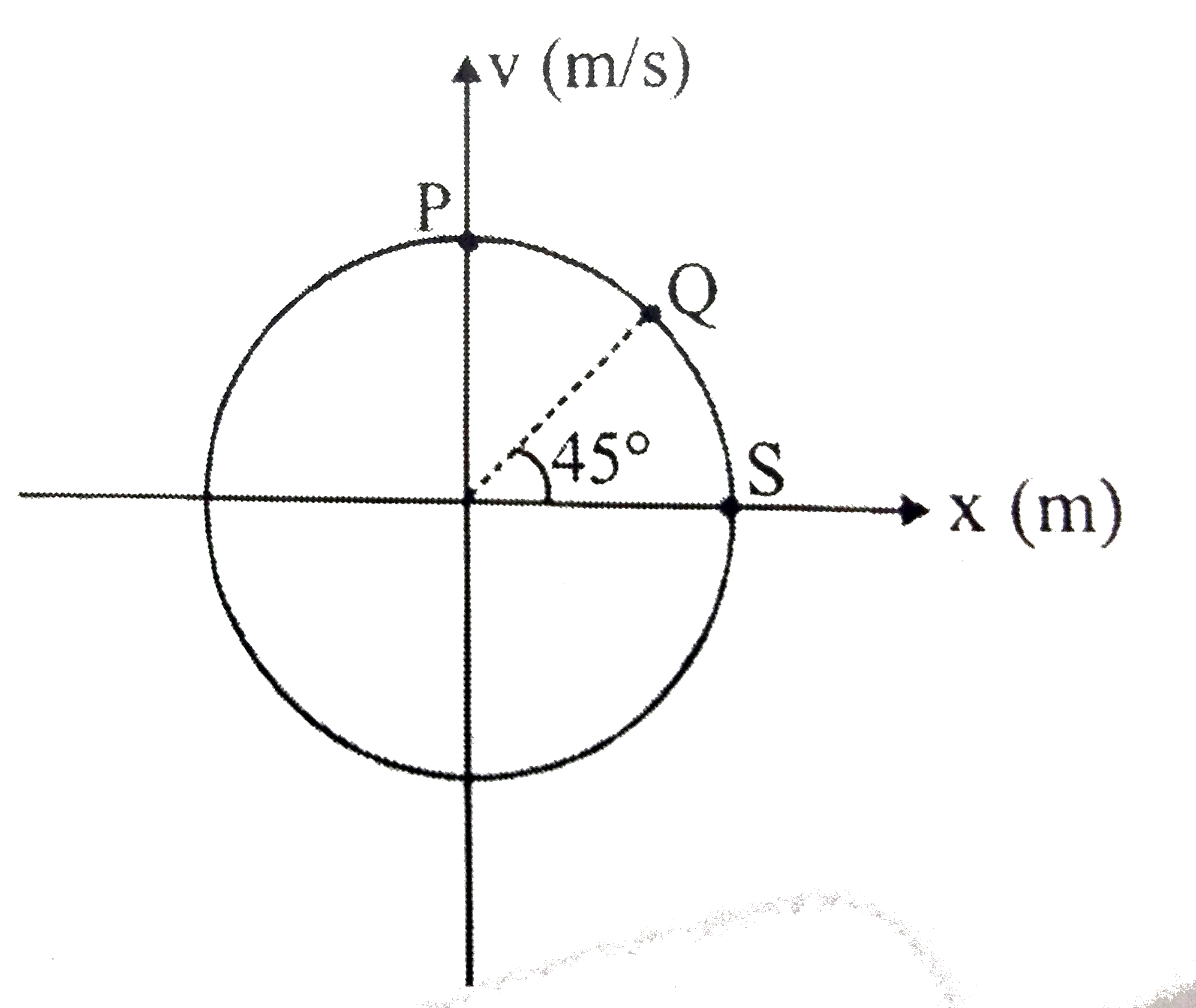Fig shows three particles A, B and C on the x-axis. They are given velocities of v1=3m/s,v2=2m/sandv3=5m/s respectively in the directions shown.
The position of centre of mass A, B and C at time t = 1 s will be

x=1123m
x=1513m
x=1013m
x=1023m
The correct Answer is:C
vCM=10×3+20×2−30×510+20+30=−43m/s
xCM=10×0+20×5−30×2010+20+30=−353m/s
x=xCM+vCMt
x=353+(−43)×1=312=1013m
Topper's Solved these Questions
- SYSTEM OF PARTICLES & ROTATIONAL MOTION BOOK - DISHA PUBLICATIONCHAPTER - SYSTEM OF PARTICLES & ROTATIONAL MOTION EXERCISE - EXERCISE-1 : CONCEPT BUILDER
58 Videos
- SEMICONDUCTOR ELECTRONICS : METERIALS, DEVICES AND SIMPLE CIRCUITSBOOK - DISHA PUBLICATIONCHAPTER - SEMICONDUCTOR ELECTRONICS : METERIALS, DEVICES AND SIMPLE CIRCUITSEXERCISE - EXERCISE -2: CONCEPT APPLICATOR
25 Videos
- THERMAL PROPERTIES OF MATTER BOOK - DISHA PUBLICATIONCHAPTER - THERMAL PROPERTIES OF MATTER EXERCISE - Exercise-2 (Concept Applicator)
28 Videos
Similar Questions
Two balls with masses m1=3 and m2=5kg have initial velocities v1=v2=5m/s in the directions shown in figure. They collide at the origin.
a. find the velocioty of the CM 3s before the collision.
b. Find the position of the CM 2s after the collision.
View SolutionTwo balls with masses m1=3 and m2=5kg have initial velocities v1=v2=5m/s in the directions shown in figure. They collide at the origin.
a. find the velocioty of the CM 3s before the collision.
b. Find the position of the CM 2s after the collision.
View Solution
Knowledge Check
Given: v1=3m/s,v2=4m/s,v3=5m/s What is mean square velocity ?
A50 m/sB12 m/sC4.5 m/sD16.7 m/sTwo particles A and B are projected simultaneously in the direction shown in the figure with velocities VA=20m/s and VB=10m/s respectively. If they collide in air after 1/2 sec. then
 Athe angle θ is 60∘Bthe distance x is 5√3mCthe angle θ is 30∘DThe distance x is 15√3m
Athe angle θ is 60∘Bthe distance x is 5√3mCthe angle θ is 30∘DThe distance x is 15√3mOn a spacecraft two engines fire for a time of 565 s. One gives the craft an acceleration in the x direction of ax=5.10m/s2, while the other produces an acceleration in the y direction of ay=7.30m/s2. At the end of the firing period, the craft has velocity components of vx=3775m/sandvy=4816m/s. Find the magnitude and direction of the initial velocity. Express the direction as an angle with respect to the +x axis.
A1130m/s,52.3∘B793m/s,37.7∘C1130m/s,37.7∘D793m/s,52.3∘
A particle is in motion on the x-axis. The variation ofits velocity with position is as shown. The graph is circle and its equation is x2+v2=1, where x is in m and v in m/s. The correct statement(s) is/are:-

View SolutionLet there are three equal masses situated at the vertices of an equilateral triangle, as shown in Fig. Now particle A starts with a velocity v1 towards line AB, particle B starts with the velocity v2, towards line BC and particle C starts with velocity v3 towards line CA. Find the displacement of the centre of mass of the three particles A,B and C after time t. What would it be if v1=v2=v3?

View SolutionLet there are three equal masses situated at the vertices of an equilateral triangle, as shown in Fig. Now particle A starts with a velocity v1 towards line AB, particle B starts with the velocity v2, towards line BC and particle C starts with velocity v3 towards line CA. Find the displacement of the centre of mass of the three particles A,B and C after time t. What would it be if v1=v2=v3?

View SolutionTwo particles A and B start at O travel in opposite directions along the circular path at constant speed vA=0.7m/s and vB=1.5m/s respectively. Determine the time when they collide and the magnitude of the acceleration of B just before this happening. (radius=5m)

View SolutionA particle is in motion on the x-axis. The variation ofits velocity with position is as shown. The graph is circle and its equation is x2+v2=1, where x is in m and v in m/s. The correct statement(s) is/are:-

View Solution
